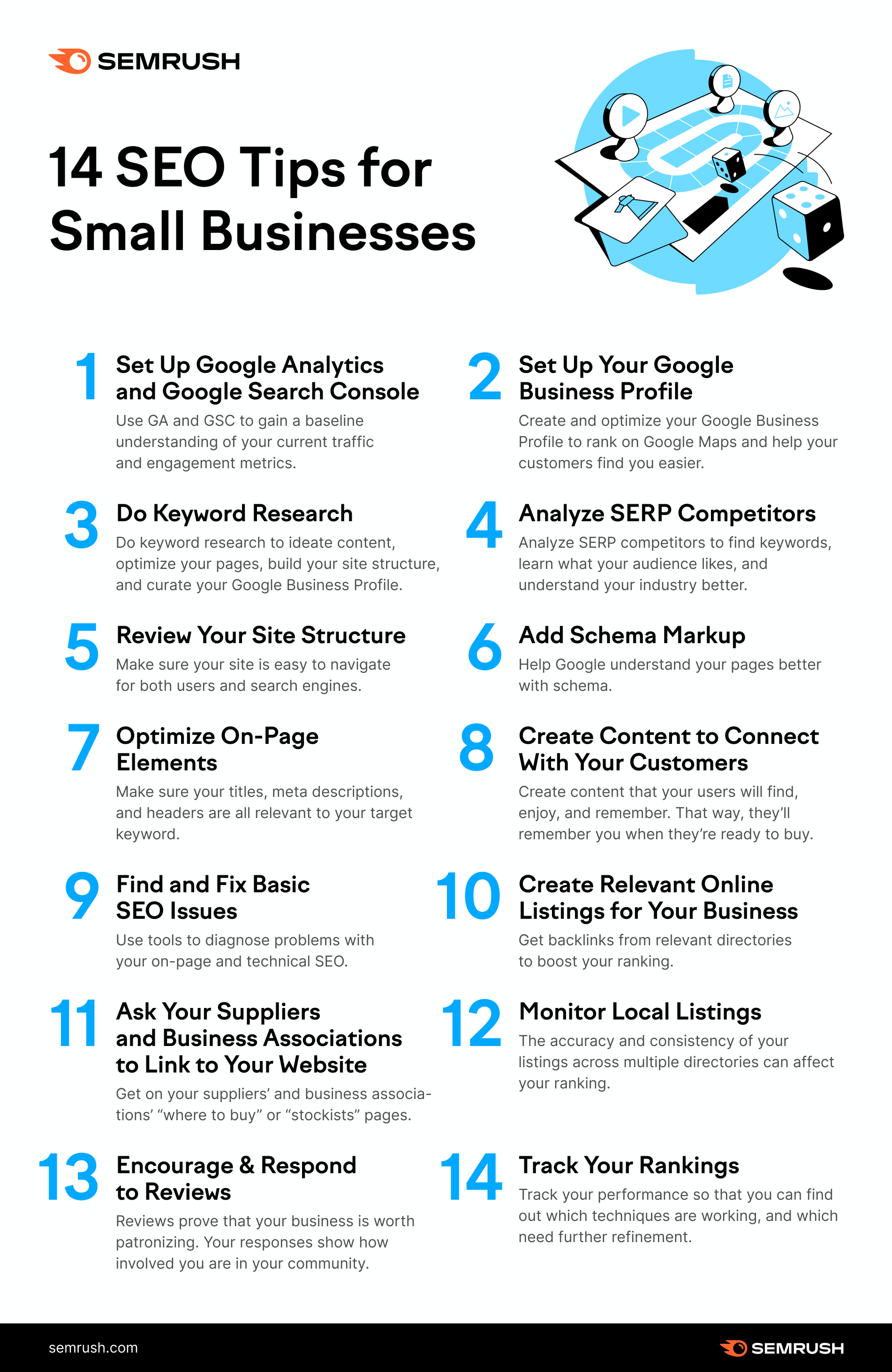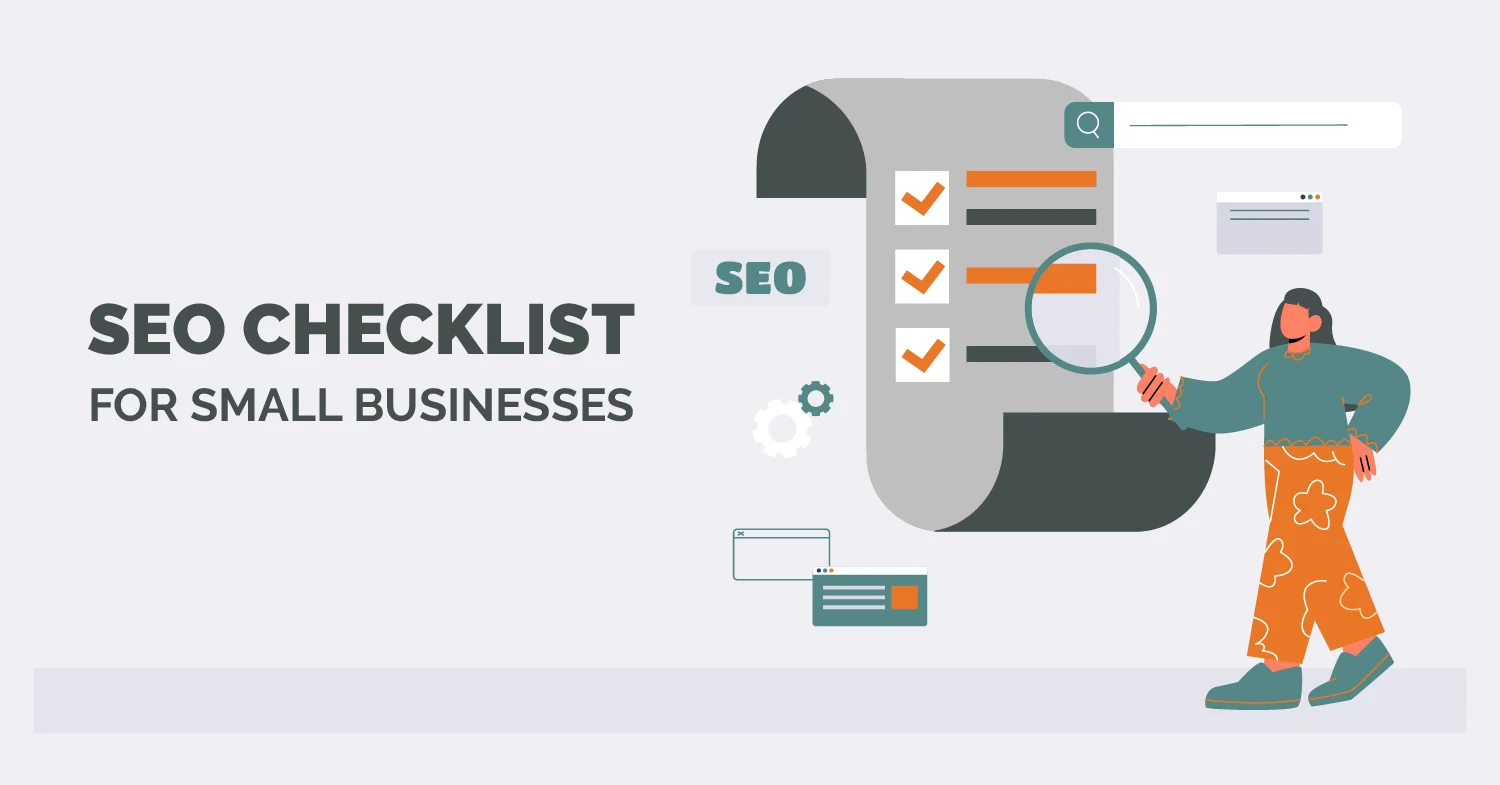How to Improve SEO for Small Businesses in 2024
SEO might sound like a complex topic reserved for big corporations, but in reality, small businesses can benefit immensely from even basic SEO practices. You don’t need a massive budget or an entire team of experts to boost your online visibility. In fact, with the right strategies, small businesses can outperform larger competitors in local search results and gain more customers. But how do you improve SEO for your small business without feeling overwhelmed?
In this guide, we’ll break down step-by-step SEO tips that are easy to implement and can significantly impact your website’s traffic, online visibility, and ultimately, your business growth in 2024.

Why Is SEO Important for Small Businesses?
Let’s face it: If your business isn’t showing up on Google, you’re losing customers to your competitors. Studies show that 75% of users never scroll past the first page of search results. This means that even if you have a fantastic product or service, without solid SEO, your small business might go unnoticed.
SEO helps you:
- Rank higher on search engines like Google
- Increase website traffic
- Build trust and credibility with customers
- Convert more visitors into paying customers
But here’s the catch: SEO isn’t a one-size-fits-all solution. What works for a global brand might not be as effective for a small business focusing on a local market. That’s why you need specific strategies tailored to your size and goals.

Step 1: Focus on Local SEO
One of the most powerful SEO strategies for small businesses is local SEO. By optimizing your business for local search, you increase your chances of being found by potential customers in your area. Google often prioritizes local businesses in search results, especially when users search for services or products near them.
How to Optimize for Local SEO:
- Claim Your Google My Business Profile: This is a free tool from Google that allows your business to appear in local search results and Google Maps. Make sure to provide accurate business information, add photos, and encourage customer reviews.
- Use Local Keywords: Focus on keywords that include your city, neighborhood, or service area. For example, if you’re a bakery in Chicago, you want to target phrases like “best bakery in Chicago” or “Chicago custom cakes.”
- NAP Consistency: Ensure that your business’s Name, Address, and Phone Number (NAP) is consistent across all online platforms, including your website, social media, and business directories.
- Encourage Customer Reviews: Positive reviews not only build credibility but also improve your local search ranking. Encourage satisfied customers to leave a review on your Google My Business profile.
- Optimize for Mobile: Many local searches are done on mobile devices. Make sure your website is mobile-friendly, loads quickly, and provides a good user experience.
Step 2: Build High-Quality Content
Content is the backbone of any successful SEO strategy, and small businesses are no exception. You don’t need to be a professional writer to create content that ranks well on Google. You just need to provide valuable information that answers your customers’ questions.
Content Ideas to Boost SEO:
- Write Blog Posts: Regularly publishing blog posts helps you target more keywords and improve your ranking over time. Consider writing articles that address common questions or concerns related to your industry. For example, if you own a pet grooming service, write a blog post on “How to groom your dog at home.”
- Create Guides or Tutorials: People love learning how to do things themselves. Creating step-by-step guides or video tutorials on topics relevant to your business can attract traffic and position you as an expert in your field.
- Use Long-Tail Keywords: Long-tail keywords are specific, often longer search phrases that have lower search volume but higher intent. For example, instead of targeting the keyword “bakery,” aim for “gluten-free bakery in downtown Chicago.” These keywords are less competitive and more likely to attract ready-to-buy customers.
- Update Old Content: If you already have blog posts or content on your site, make sure they’re up to date. Updating old posts with new information or better SEO can help boost their rankings.
- Answer Questions with FAQ Sections: Frequently Asked Questions (FAQs) sections are a great way to target common search queries and provide immediate answers to users. This can help improve your chances of appearing in featured snippets, the coveted “position zero” on Google.
Step 3: Optimize On-Page SEO
On-page SEO refers to the practice of optimizing individual pages on your website to rank higher on search engines. Even small tweaks can make a big difference in how Google understands your site.
Essential On-Page SEO Tips:
- Optimize Title Tags and Meta Descriptions: These are the first things users see in search results, so make them compelling. Your title should include your main keyword and be under 60 characters. The meta description should summarize the page and encourage users to click, ideally under 160 characters.
- Use Headers (H1, H2, H3): Break your content into sections using header tags. Not only does this make your content more readable, but it also helps Google understand the structure of your page.
- Alt Text for Images: Whenever you upload images to your website, make sure to add alt text that describes the image and includes your target keyword. This helps your images show up in Google image search and improves your overall SEO.
- Internal and External Links: Link to other relevant pages on your site (internal links) and credible external sources (external links). This helps Google understand the relationships between your content and boosts your authority.
- Improve Page Speed: Slow websites not only frustrate users but also negatively impact your SEO. Use tools like Google PageSpeed Insights to identify and fix speed issues.
Step 4: Build Backlinks
Backlinks are one of the most important ranking factors in SEO. They are links from other websites to your site, and Google sees them as votes of confidence. The more high-quality backlinks you have, the more authority your site will gain.
How to Build Backlinks for Small Businesses:
- Reach Out to Local Bloggers and Influencers: Networking with local bloggers or influencers can help you get mentioned in their content, which drives both traffic and backlinks.
- Guest Blogging: Offer to write guest posts for other websites in your industry. In exchange, you can usually include a link back to your site.
- Submit Your Website to Local Directories: Adding your business to local directories like Yelp, TripAdvisor, and Yellow Pages can help you earn backlinks and improve your local SEO.
- Create Shareable Content: The more valuable your content, the more likely it is to be shared and linked back to by others. Infographics, original research, or a well-written guide can all attract backlinks.
Step 5: Monitor and Measure SEO Performance
It’s not enough to just implement SEO strategies—you also need to track your progress. Tools like Google Analytics and Google Search Console provide insights into how your website is performing, where your traffic is coming from, and what keywords are driving traffic.
Key Metrics to Monitor:
- Organic Traffic: How many visitors are finding your website through search engines?
- Bounce Rate: Are users leaving your site immediately, or are they staying and engaging with your content?
- Keyword Rankings: Are you ranking higher for your target keywords?
- Conversion Rate: How many of your visitors are taking the desired actions (e.g., purchasing a product, filling out a form)?
By regularly monitoring these metrics, you can see what’s working and where improvements are needed.
Conclusion

Improving SEO for small businesses may seem challenging at first, but with a few simple strategies, you can make a significant impact on your online visibility. By focusing on local SEO, creating valuable content, optimizing your website, building backlinks, and monitoring performance, you’ll be on your way to better rankings and more customers.
The best part? You don’t need a massive budget or a dedicated SEO team to see results. With time and effort, small businesses can compete with—and even outrank—larger competitors in search engine results.
Ready to start improving your SEO today? Implement these tips and watch your traffic grow!
comments powered by Disqus